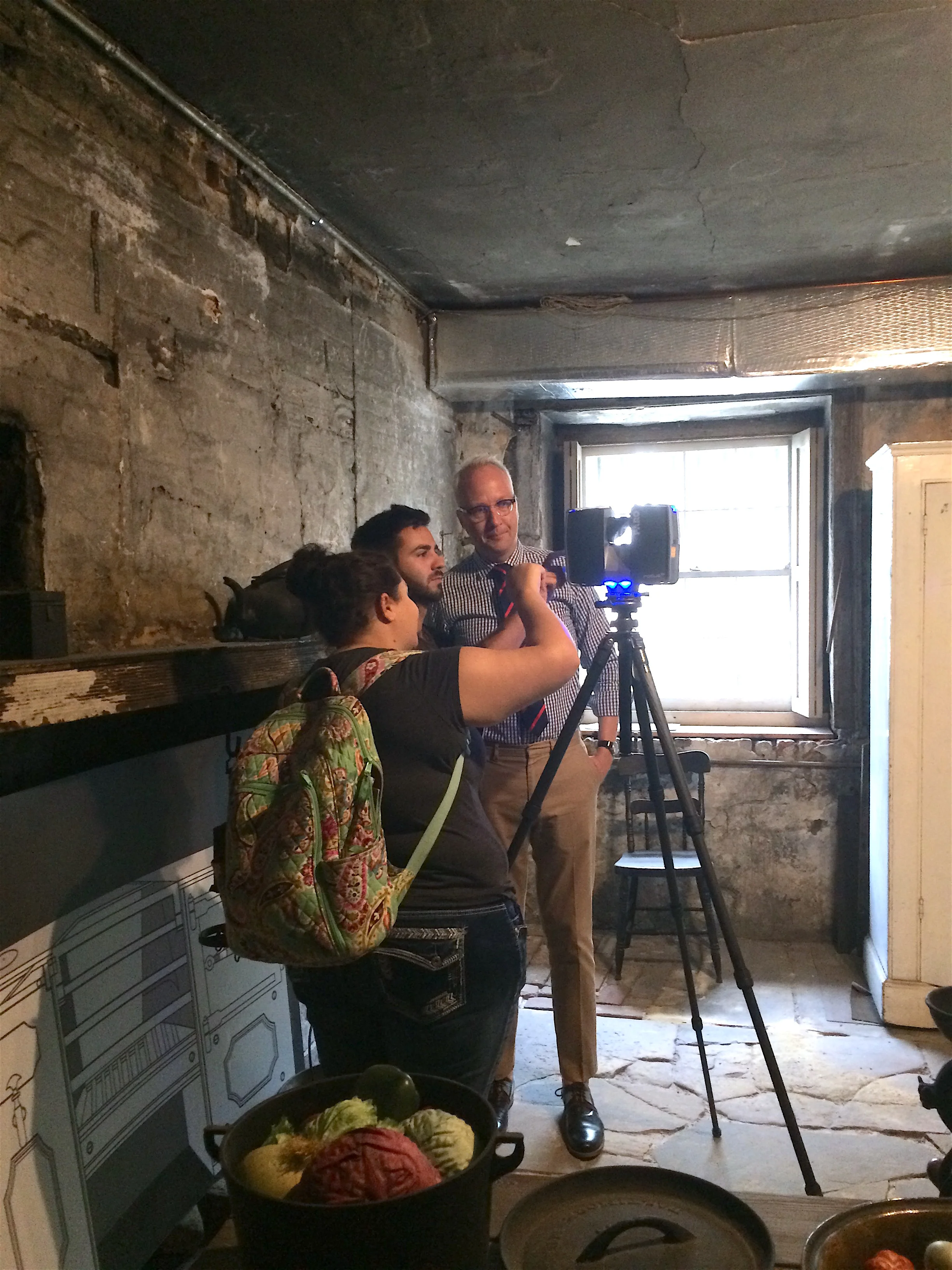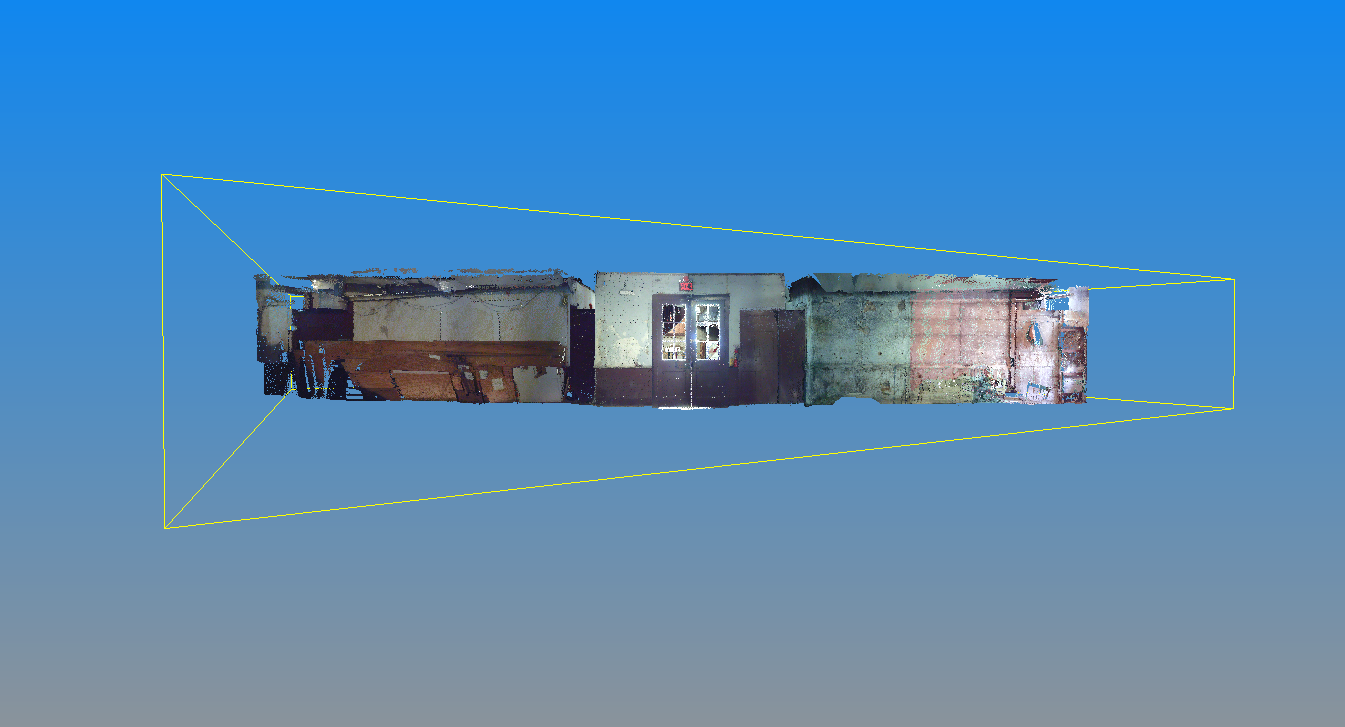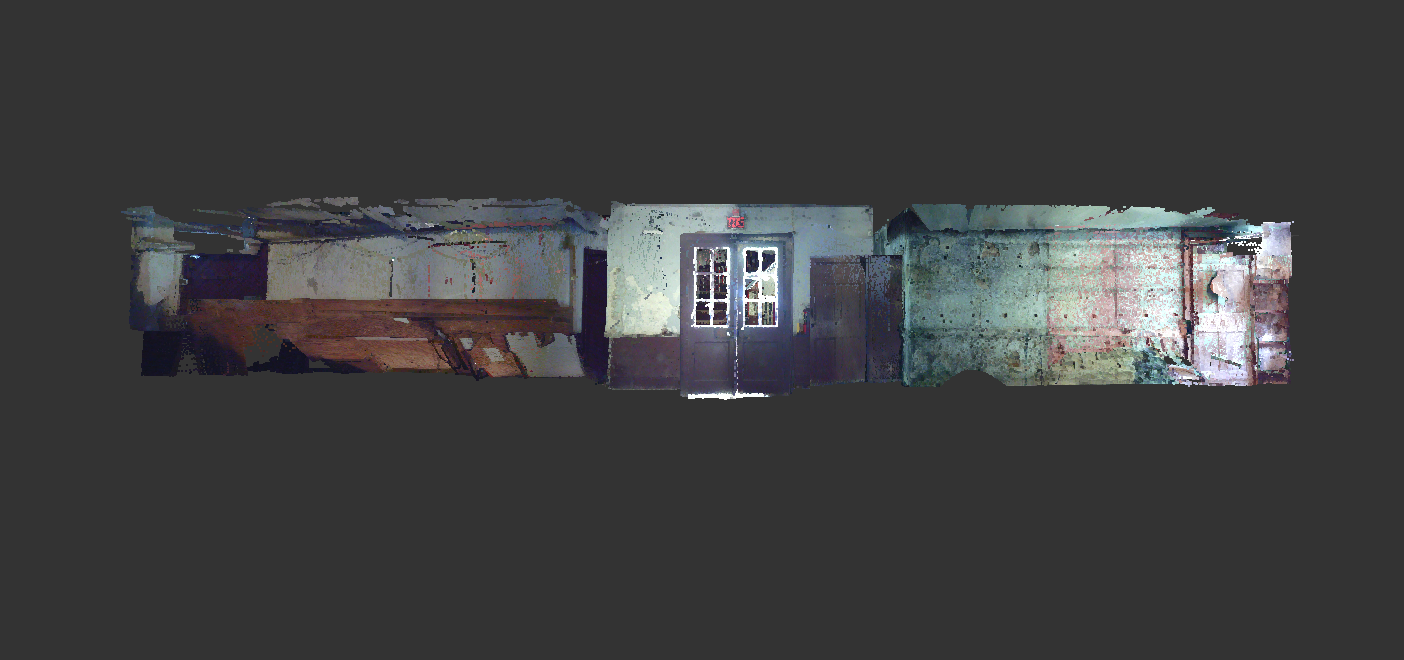Overview of Laser Scanning

Regardless of what type of scanner you utilize, all perform (more or less) the same basic task. Each scan involves three-dimensional point capture. This process is used to obtain information about a certain subject through either a specific type of light, or a laser. The points are oriented in a point cloud and registered to deliver the detailed information which was captured. This procedure is non-invasive and requires six basic pieces of equipment:
- scanner
- tripod
- targets
- computer
- data storage
- source of power
In the most basic summary, the process roughly consists of:
- Figure out scan locations
- Set targets
- Capture Data (make sure there is a 30% overlap in scans)
- Process the Data (Conversion of points in point cloud)
- Mesh Data (Point cloud data converted into a 3D scan)
To make sure your scan results are as accurate as they can be, you want to steer clear of surfaces which are:
- Shiny or reflective
- Transparent
- Translucent
- Overly dark in color
The four main types of scanners are time-of-flight (ToF), phase-based, optical triangulation and structured light.
Time-of-Flight
This type of scanning emits a pulse of light which hits an object and bounces back to deliver the information/measurements obtained. Although it is often the slowest in speed, it has the largest range of capture. This feature makes it the best in large areas or for landscapes.
Time-of-Flight. About the Project- Scanner Types. Scottish Ten.
Phase-Based
A continuous laser is emitted while using this type of scanner. It is faster than time-of-flight scans, but has a shorter capture range. This type of scan is good for buildings, or particular structures/objects.
Phase-Based Scanner. About the Project- Scanner Types. Scottish Ten.
Optical Triangulation
The way this scanner works is evident in its name! The process uses a laser beam, a camera and an object. The beam bounces off the object being studied and travels to the camera where the process will begin again. The angles and coordinate plane created by this "triangulation," will allow for the calculation of the specific measurements and information needed to create a 3d form of the object. This form of scanning is high density and works extremely fast, making it the best choice for ornate objects.
Optical Triangulation. About the Project- Scanner Types. Scottish Ten.
Structured Light
This last type of scan revolves around patterns of light. Light is projected in a dark space onto the 3D subject being scanned. This will result in various series/patterns of light which will be captured and calculated by the camera. These patterns will create the final 3D replication.





